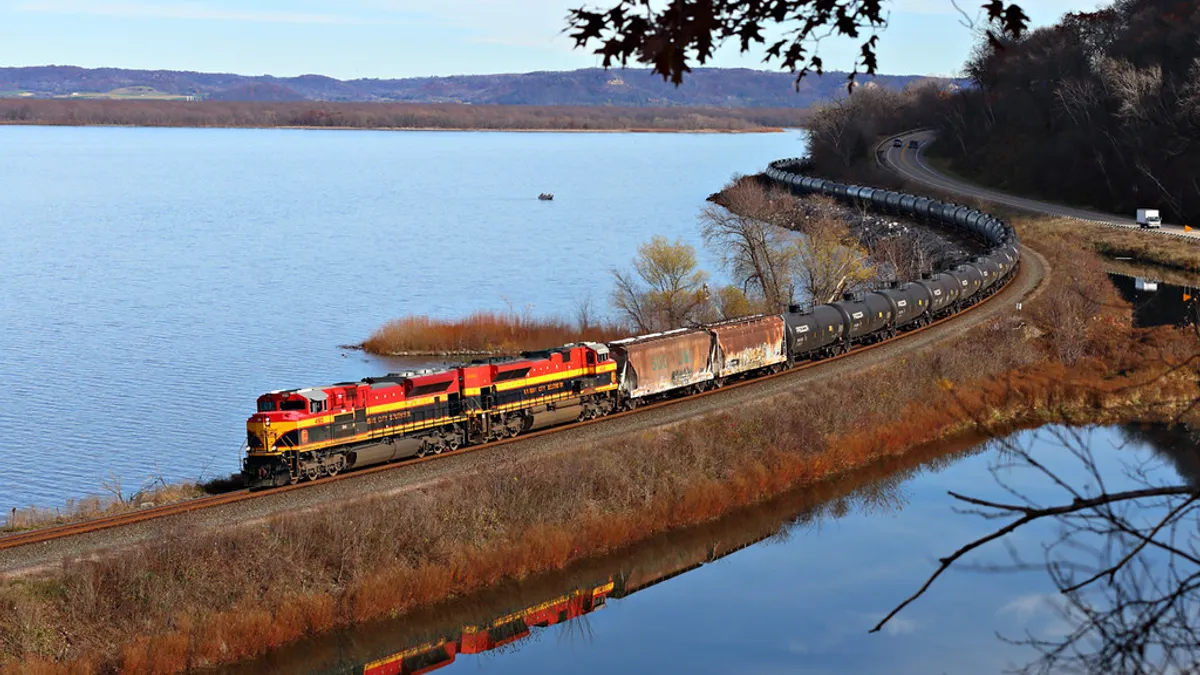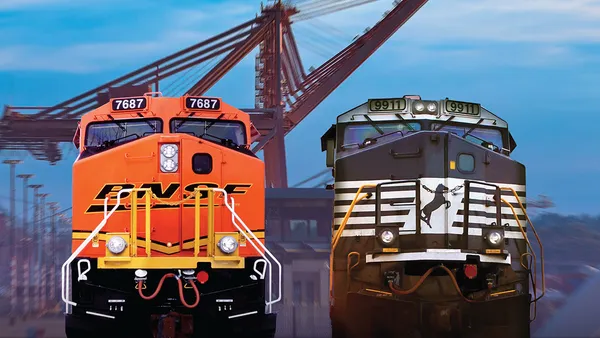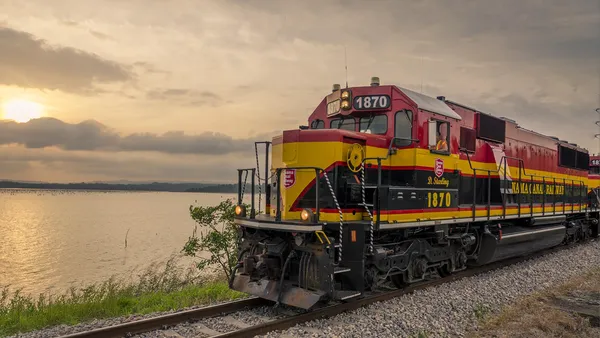Dive Brief:
- The Surface Transportation Board ordered the top four Class I railroads on Monday to provide more details on their plans to restore service, with Chairman Marty Oberman saying materials submitted so far have been “woefully deficient.”
- Union Pacific, BNSF, CSX and Norfolk Southern will be required to revise their plans to correct deficiencies and provide new information about how they intend to improve customer service, including “timely responses to customer inquiries about delays.” Failure to comply could lead to fines of up to $8,736 per day.
- Railroads in some instances omitted required information or did not provide sufficient detail, the order said. “The plans simply failed to instill confidence that the carriers have a serious approach to fixing a problem caused by their own lack of preparedness,” Oberman said in a statement.
Dive Insight:
Shipping disruptions within the rail industry compelled the STB in May to order carriers to provide more metrics and information about their plans to restore service over the next six months, a move the Board said was meant to minimize “the need for further regulatory intervention.” But railroads’ failure to provide adequate service recovery plans now raises the possibility the STB could take further action.
Railroads failed to provide information about how current operating plans could be affecting their recovery efforts, the order said. Some carriers also submitted required data late, and at least one filing “had deficiencies so serious that the data was rendered functionally useless.”
Although the Board detailed issues within each of the carriers’ plans, it specifically called out Union Pacific and Norfolk Southern for refusing to provide six-month targets for achieving their service goals. The Board also noted additional issues with submissions from Union Pacific, which it said “reflected an attitude of indifference to the documented effects of its service deficiencies on its customers and of disregard for the Board’s statutory oversight of the freight rail industry.”
Carriers will now be required to provide more detail and specific metrics in their recovery plans, including the daily average number of employees not available for service and the number of train, yard and engine employees that began and completed training. Railroads will also need to explain “how the specific remedial actions they intend to take will translate into enhanced performance” on service metrics of their choosing.
The Board noted that “although the Carriers should have viewed the general nature of the May 6 Order as an opportunity to demonstrate that some level of trust in their individualized, specific private sector solutions was warranted,” the additional information is now necessary to evaluate current service problems and determine further action.
Data submitted so far shows that rail service has yet to improve, with carriers still reporting increased terminal dwell times and decreased average train speed. The Board also notes that the number of trains held per day due to crew or locomotive availability has yet to decline, an issue that shippers raised at an April federal hearing on rail service.
Carriers’ responses to questions on whether they would lift velocity restrictions were also deemed insufficient, and the STB will require railroads to provide more information on whether utilizing additional power on trains would ease congestion.
“While the railroads must always comply with Board orders, it is particularly disturbing that the railroads failed to comply with the order requiring them to file adequate service recovery plans,” Oberman said. “I had expected a better response from the carriers to the Board’s previous order, and now with more explicit instructions, which should not have been needed, there will be no excuse for continued lack of compliance.”















